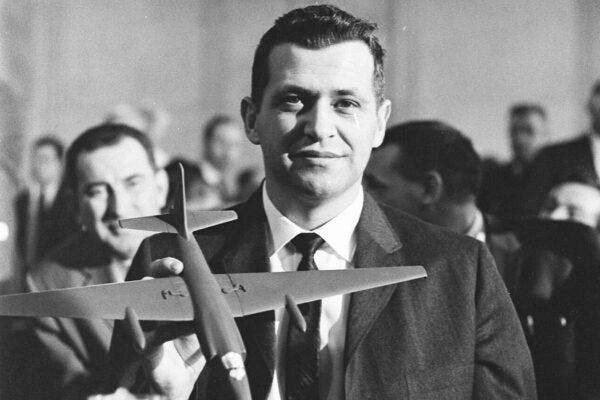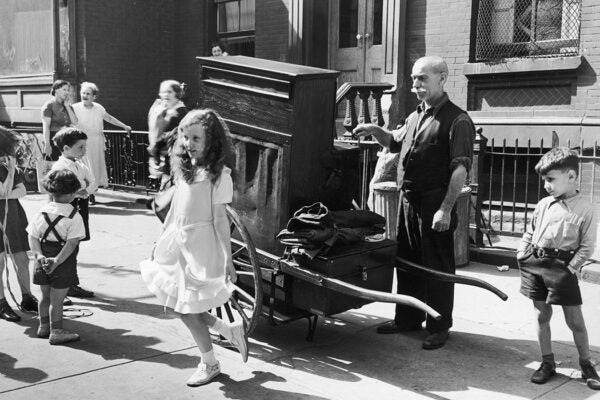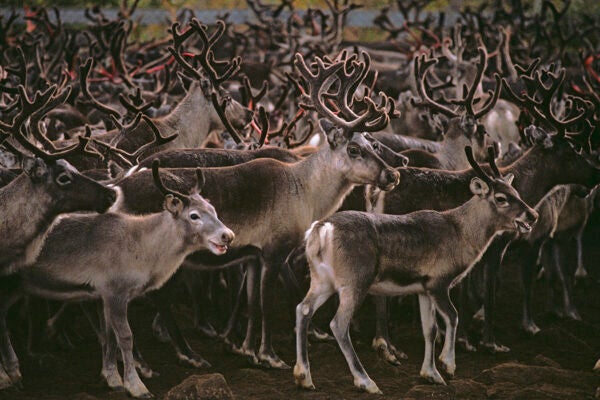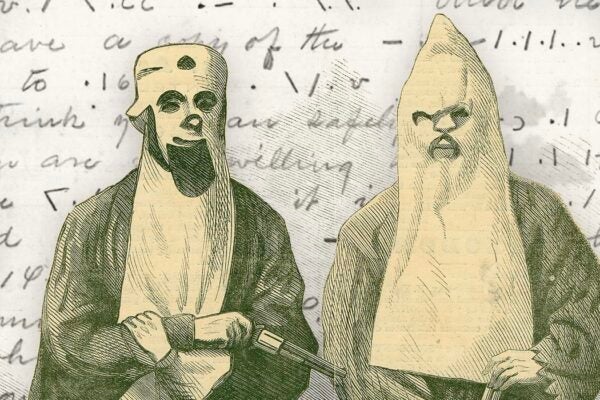All US presidents have, to some degree or another, tried to shape how the public remembers their presidency. Some take conventional routes, like writing memoirs. Others opt for more creative approaches; Lyndon B. Johnson, for instance, considered trying to boost attendance figures at his presidential library by bribing college students with doughnuts. Increasingly, some presidents begin the process of “legacy building” before they’ve even vacated the White House.
June 5, 2024, marks twenty years since the death of Ronald Reagan, the country’s fortieth president. Reagan was the first successful two-term president since Eisenhower almost thirty years before (Johnson, Nixon, Ford, and Carter all failed to secure or complete their respective second terms; Kennedy was assassinated in his first). He was also only the second person to be re-elected president since the ratification of the Twenty-Second Amendment, which imposed a two-term limit on officeholders. This made his one of the first presidencies with a clearly defined end date.
Knowing exactly when he was going to leave the White House gave Reagan a unique opportunity. He, his wife, and his aides thought carefully about what they hoped for legacy-wise, and then used the power of the office during his second term to shape that legacy, calling their efforts “The Campaign for the Reagan Agenda.” Given that presidential legacies are prominently displayed within presidential libraries and museums, Reagan’s aides ensured they were closely involved in the conception and execution of his.
The Presidential Libraries
As Lynn Scott Cochrane explains, “presidential libraries are actually museums and archival repositories, not libraries in the usual sense.” Federal monies are used to maintain their functionality, but the museum space itself is funded and maintained by private donors. Historian John Bodnar argues that when the presidential library system was first inaugurated in the 1930s, in tandem with the state’s growing oversight in the regulation of day-to-day life, “the government also attempted to influence and, therefore, distort the discussion over how the past related to the present.” The presidential library system offers but one example of this involvement.
Similarly, Benjamin Hufbauer tells us in Presidential Temples that “the obelisks, temples, and presidential libraries that commemorate presidents are ideologically charged spectacles of history and personality meant to inspire reverence for the presidency.” For their part, museums are an important way for the American public to engage with history; indeed, in their research, Roy Rosenzweig and David Thelen observed that Americans put “more trust” in history museums than they do in any other pedagogical channels. It’s therefore important to consider where such institutions are located, who designs the exhibitions we see, and what their motives might be.
Locating the Library
The first step for establishing the Reagan Library was deciding where to put it. The relationship the president intends to have with the library plays an important role in determining its location. For instance, Harry Truman used his presidential library almost daily from 1957 to 1967, and his “strong personal interest” in the library played an important part in the decision to locate it in his hometown close to sites important to him, including the house he grew up in and his church.
For Reagan, high attendance figures and an active public events program were far more pressing concerns. In 1981, Robert Warner, Archivist of the United States, said Reagan was “pretty well committed” to locating his future presidential library at Stanford University; his gubernatorial papers were housed there already. Aside from this practical consideration, the White House also believed that a university location offered a good way to guarantee foot traffic and to support an active public events program; many subsequent presidential libraries have been situated on college campuses for these reasons.

Although three years later, the Reagan Foundation—founded to oversee the creation of the library— issued an official announcement confirming the Stanford site, by April 1987, the Foundation reversed course; ongoing pressure from Stanford faculty and students organizing against the library scuttled the plan.
Library planners pivoted toward a site with more sentimental value, signing a contract in November 1987 to build the library in its present location, Simi Valley, in southern California. The press reported that the Reagans were enchanted with the “unspoiled” landscape; it reminded them of the landscape at their ranch around eighty miles northwest. Contractors competing for the job were asked to keep the ranch in mind when proposing designs for the buildings. In an assessment of the project in The Public Historian, Ted McAllister noted that the location was “befitting Reagan’s cowboy self-image,” while other critics remarked upon its hilltop location and its echoes of the president’s invocation of the “Shining City on a Hill.”
The Function of the Library
Reagan wanted his library to play an active role in public policy discussions in the years following his retirement, and an early plan for it included a highly ambitious Center for Public Affairs.
One draft of the estimated of space needed to accommodate such a center came in at a whopping 146,250 square feet; included in this blueprint were half a dozen courts, swimming pools, and a putting green. Owing to a lack of funding, the Reagan Foundation eventually built the center on a far more modest scale. That said, the opening of the Ronald Reagan Institute in Washington, DC, created to promote Reagan’s “ideals, visions, and leadership example,” has realized some of these initial goals—such as public roundtables and hosting postdoctoral researchers—originally intended to be pursued in Simi Valley.
Designing the Museum
Predictably, the exhibitions in presidential libraries are very sympathetic to the respective office holders. Presidents’ controversies and diplomatic failures are largely omitted absent a positive spin. Though the Nixon Library included an exhibition on Watergate when it opened in 1990, Tim Naftali, its director, described it as “inaccurate and whitewashed.” That changed when the National Archives took control of the library and opened a more critical, revamped exhibition on Watergate in 2011.
Archival material held by the Reagan Library includes discussions between White House staffer Fred Ryan and the Reagans about the library’s gallery space and the “substantive” issues the administration hoped to feature. It also includes ideas for exhibits that would show the “personal ‘human side’ of the Reagans.” Even early planning of the gallery spaces reflected this narrow version of Reagan’s presidency that would be on show.
Ryan prepared a list of preliminary exhibition ideas for consideration: Reagan’s childhood, his presidential campaigns, and three central preoccupations of his presidency—economic recovery, arms control, and defense. Ryan also suggested lighter fare, such as Reagan’s humor and Hollywood career, and observed that an exhibition section about gifts bestowed by foreign leaders was “very popular” elsewhere.
Donovan and Green, the firm that designed the space, encouraged the Reagans’ input. Over a year and a half, Nancye Green met with the Reagans three times a month to select photographs and prepare captions for the coming displays. The significant time commitment made by the outgoing president and his wife demonstrated the value they placed in contributing to the story that would be told in this space.
The original design of the Reagan Library failed to mention the Iran-Contra affair—a defining scandal of Reagan’s presidency—even in passing. Benjamin Hufbauer notes that though many surviving documents related to this scandal are housed in the adjoining archive, until 2011, there was no reference to it in the museum itself. Hufbauer argues that pressure from “the Reagan family and Reagan’s supporters” influenced the telling of Reagan’s story at the library, even after an Alzheimer’s diagnosis in 1994 forced Reagan to discontinue his involvement with the project.
The administration was proud that Reagan had the largest of all the presidential libraries up to that point, at 153,000 square feet; it was a mark of prestige and significance. Its size “reflects Reagan’s importance to the Republican Party,” Hufbauer argues in Presidential Temples, and has come to act as a “Republican shrine” which often hosts presidential primary debates.
Other Legacy Building Activities
To appreciate the White House’s efforts in planning for the Reagan Library, we should also consider the sheer volume of other legacy building efforts they were engaging in simultaneously. Reagan was the first president to appoint an official biographer—Edmund Morris—while still in office, granting him unprecedented access to Reagan and his closest advisors. Reagan and his administration tried to ensure a Supreme Court legacy with their failed attempt to appoint Robert Bork as a justice, an event historian Joe Ryan-Hume calls “a referendum on the Reagan Revolution.”
In addition, Reagan embarked upon an elaborate campaign tour in support of his Vice President, George H. W. Bush, whose bid for the White House was seen by many as an unofficial “third term” for Reagan. Reagan traveled nearly 30,000 miles to campaign on Bush’s behalf, attending more than one hundred events in nineteen states. Finally, writers in Reagan’s Office of Communications carefully planned a series of “legacy speeches” for his final months in office, culminating in his immaculately staged Farewell Address. In this context, their careful attention to the future Reagan Library is completely unsurprising.
* * *
On November 4, 1991, a then-eighty-year-old Reagan returned to Simi Valley for his library’s dedication. In his remarks he said:
Proverbially, old men plant trees even though they do not expect to see their fruition. Well, so it is with presidents. The doors of this library are open now, and all are welcome. The judgment of history is left to you, the people. I have no fears of that, for we have done our best, and so I say, come and learn from it.
Weekly Newsletter
His remarks notwithstanding, the Reagan White House was hardly content to leave the judgement of history up to “the people.” Instead, the administration played an active role in selecting the location, design, and exhibitions at Reagan’s presidential library, with a view to influencing how future generations perceive Reagan and his presidency. More than 300,000 visitors made the journey to Simi Valley to visit the library in the first twelve months of its opening.
The Ronald Reagan Foundation has continued to use the venue to tell the story of the president’s legacy. If the narrative presented in this museum is the one that Reagan and his aides wanted to share, with little room for alternative interpretations, then it becomes even more important for audiences to engage critically with its holdings, rather than accept its exhibitions at face value.







